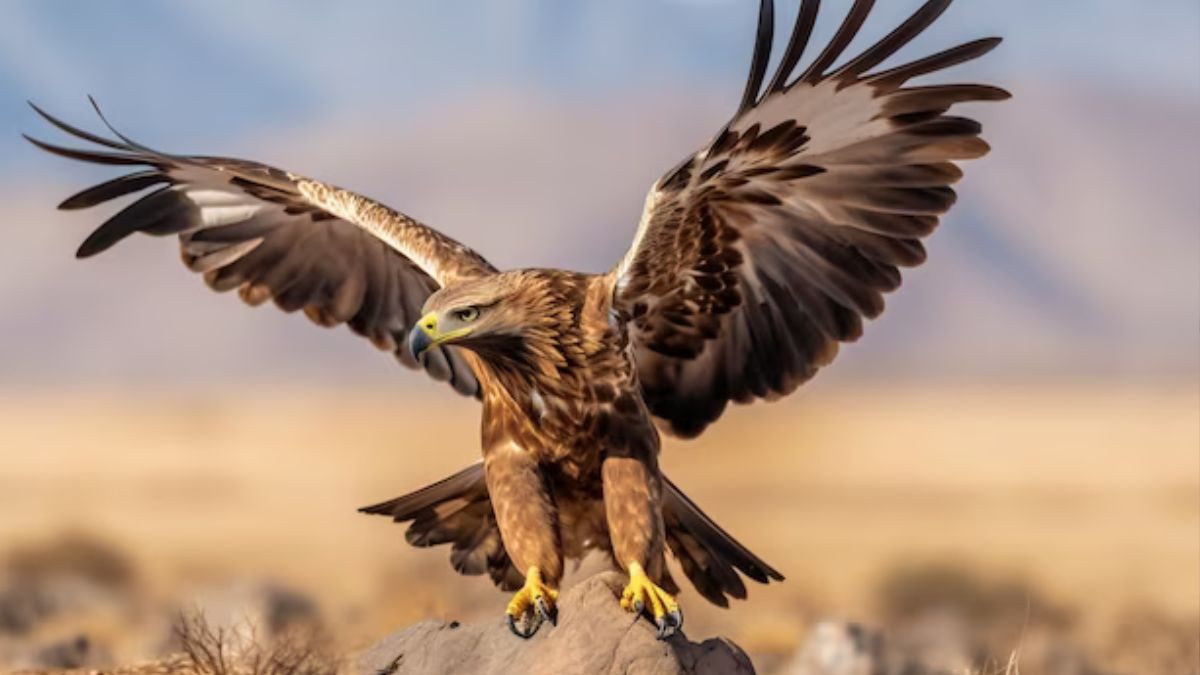FEATURED
Unveiling the Fascinating World of Falcon Stud

The term “Falcon Stud” has acquired a unique significance among bird watchers and environmentalists. Magnificent for what they are, owls have always held a special place in the hearts of humans. Falcons have become deeply interwoven in the very fabric of human history, both as awe-inspiring hunters and as significant cultural symbols. The fascinating world that Falcon Studs will be discussed in this article, including its biology, symbolism, education, and more. Put on your safety belts cause we’re about to take off on an airplane ride of a lifetime!
Introduction
In the fantastical world of Falcon Stud, the magnificent birds of prey hold absolute power. Due to their exceptional eyesight, lightning-fast reflexes, and unparalleled hunting prowess, these beasts have been treated as held in high reverence by people of all cultures for millennia. Through this piece, we’ll travel to the wonderful region that falcons to find out all about them, from the many different categories they come in to their spiritual significance and practical application in the competitive discipline of falconry.
The Majestic Falcon: A Brief Overview
Falcons, members of the family Falconidae, are fearsome predators thanks to their sharp beaks and talons. Streamlined bodies and distinctive plumage patterns are two common ways in which these birds are identified. These birds have adapted to a wide variety of ecological systems, allowing them to be distributed on every continent except Antarctica.
Falcon Species Diversity
Extraordinary variety exists among raptor species, each with its own set of properties and set of characteristics. Despite the many different kinds of falcons, the Hawker Peregrine remains one of which is most well-known.
Peregrine Falcon
One of the most recognized falcon varieties is the Hammerhead Falcon, which is able to descend at speeds of up to 190 miles per minute during hunting stoops. While hunting, they can descend at velocities of up to 386 kilometers per second (240 miles every hour).
American Kestrel
The small but lively American Kestrel falcon is well-known for its striking plumage and hovering chasing technique. These birds are frequently spotted perched on wires or poles, scanning the ground below for insects and rodents.
Saker Falcon
The Saker Falcon is a large and magnificent bird that can be found in a variety of environments, from grasses to deserts. In the competitive discipline of falconry, they are highly sought after for their superior strength and quickness.
The Falcon’s Natural Habitat
Falcons are able to succeed in an extensive spectrum of environmental systems, from deserts to grasslands to forests and even suburbs. They are well-known for their adaptability to numerous environments and can usually be found in close proximity to open areas where they can stalk their prey.
The Ancient Art of Falconry
History of Falconry
Hawking, or falconry, is the traditional method of training falcons for the purpose of hunting. Ancient cultures from the region of the Middle East to Europe and Asia all joined in this practice, which has been around for generations.
The Role of Falcon Studs
Trained falcons, known as “Falcon Studs,” are crucial for the discipline of falconry. The birds in question have been carefully chosen by falconers and trained to aid them in the pursuit of game birds. Trust and appreciation form the foundation of a friendship amongst a hunter of falcons and their falcons.
Training Falcons: An Art and Science
To successfully train a falcon, one needs time, effort, and skill. The basic steps of falcon training are as follows:
Choosing a Suitable Falcon
Falconry begins with the careful choosing of a suitable falcon. The age, personality, and natural hunting instincts of the bird are all considered.
The Bonding Process
Forming a close connection with your falcon is essential for effective training. Falconers socialize their birds to make them more trusting of humans.
Teaching Hunting Techniques
Falconers teach their birds of prey how to hunt by recreating real-life hunts. The falcon will be trained to hunt and catch prey, which will typically take the form of dummy targets.
Falcon studs in the present day
Conservation Efforts
Conservation measures are under way for protecting falcon populations as the world faces problems with the environment. The continuing existence of these magnificent birds depends upon programs for breeding and the protection of their habitat.
Falconry in Sporting Events
Even in the realm about athletics, falconry has made its mark. Popular events often feature falconry displays, where the amazing abilities of trained falcons are on display for spectators to marvel at.
The Symbolism of Falcons
Throughout history, many cultures have associated the falcon with significant meanings. They’re often used to symbolize nobleness, speed, and vision. Falcons are seen as symbols of royalty and authority in many cultures.
Conclusion
In summing up, I can say that Eagle Stud is an exciting adventure into the fascinating world of raptors. Falcons always awe and astound us for numerous motives, not the least of which is their cultural and, of course, hunting significance. Whether you want to become a falconer or are simply fascinated by these birds of prey, there is a wealth of information and wonder to be found in the world for the Falcon Stud.
Frequently Asked Questions (FAQs)
- What is the average lifespan of a falcon in the wild?
- How long a wild falcon can expect to live is species-specific. The average lifespan is between 5 and 15 years, though some species can live much longer than that.
- Do falcons make good pets?
- Falcons as well as other birds employed in falconry are not frequently kept as pets because of the special care and training birds require. Experienced falconers ought to deploy devices most effectively.
- Why are falcons associated with royalty and nobility?
- The hunting prowess and symbolic significance of the falcon have made it a traditional symbol of royalty and nobility for centuries. Aristocratic families frequently took advantage of them on hunting trips.
- Are falcons endangered species?
- Because of loss of habitat and other threats, most falcon species are in danger of extermination. Efforts are currently being made to conserve these endangered species.
- Can anyone become a falconer?
- Training and commitment are prerequisites for a profession as a falconer. Falconry is bound by rigorous rules and licensing in many nations to protect both the birds and the general public.
FEATURED
Unveiling the Power of ilikecpmix

You have entered the realm of health and wellness, where novel dietary supplements are continually appearing to assist us in maintaining a better lifestyle. A certain individual’s name has been trending recently: ilikecpmix. Everything you need to know about ilike cpmix, including its features, advantages, and usage, will be covered in detail in this post.
1. What is ilikecpmix?
Ilikecpmix is a newly developed nutritional supplement with the primary goal of improving general health. It offers a comprehensive approach to health by addressing different parts of the body with its special combination of all-natural components.
2. Benefits of ilikecpmix
- Boosts Energy Levels: Naturally, ilikecpmix can increase your energy levels, which is one of its most notable advantages. Wave farewell to lunchtime lulls and welcome to constant energy.
- Supports Mental Clarity: With ilike cpmix, it’s not only about the body; it helps you stay mentally clear. Your ability to concentrate and think clearly will be enhanced.
- Aids Digestion: Ilike cpmix can help promote digestive health by utilizing substances that are recognized to aid digestion.
3. How to use ilikecpmix
Easy as pie to implement into your daily life is ilikecpmix. Just mix the prescribed amount with some water and swallow, ideally before or with food. Maintaining a regular schedule will help you achieve your goals more quickly.
4. ilikecpmix vs. competitors
It is critical to know what makes ilike cpmix different from the competition in the supplement industry because there are so many possibilities. Unlike other supplements, ilikecpmix cares about your overall health and not just one certain area.
5. Real-world results
Get a feel for ilikecpmix’s efficacy by looking at some actual outcomes. A sense of well-being, enhanced mood, and more vitality have all been observed by users. The range of advantages that ilike cpmix offers is demonstrated by these outcomes.
6. Tips for maximizing ilikecpmix effects
You can get the most out of ilike cpmix, even though it’s powerful on its own. Get maximum benefit out of your health and wellness efforts by incorporating a balanced diet, maintaining hydrated, and exercising occasionally.
7. Customer testimonials
Believe us when we say… Testimonials from happy ilikecpmix customers may be found here:
“After trying several other supplements, ilike cpmix is the best. I have greater stamina and can concentrate all day long.”
“Ilikecpmix has improved my health in many ways, but most notably via easing my stomach issues. I would suggest it without hesitation!”
8. Side effects and precautions
Even if ilike cpmix usually doesn’t cause any problems, you should still be cautious because there are some possible adverse effects. Always check with your doctor before beginning a new supplement regimen, but especially so if you have any kind of preexisting illness.
9. Conclusion
Ilikecpmix is a supplement, but it’s also a way of life booster. In the cutthroat health supplement industry, ilikecpmix has made its mark thanks to its numerous advantages and good customer reviews. Make this the beginning of a healthy you.
10. FAQs
1. Is ilikecpmix safe for everyone?
Without a doubt! Usually check with your doctor considering adding another drug to your regimen, especially if you have existing medical conditions.
2. Can I combine ilikecpmix with other supplements?
Sure, ilike cpmix works well with most other supplements. It is recommended to talk to a doctor to make sure they are compatible.
3. How quickly can I expect results with ilikecpmix?
A lot of people say they feel better after just a few weeks of using it regularly, although everyone’s experience is different.
4. Are there any age restrictions for using ilikecpmix?
No matter your age, ilike cpmix is perfect for you. However, it strongly encouraged that children under the age of 18 and women who are currently becoming pregnant or giving birth seek medical advice ahead of usage.
5. What makes ilike cpmix stand out in the market?
What sets Ilikecpmix apart is its comprehensive approach, which takes into account both mental and physical health. What makes this supplement unique from others is the thoughtful combination of all-natural components.
ENTERTAINMENT
Soul Land VI: Unveiling the Mysteries and Marvels

Prepare yourselves, anime fans! Fans all across the globe have gone crazy for the sixth season of the legendary “Soul Land” series. Soul Land VI is an enthralling anime series, and in this in-depth analysis, we’ll explore its fascinating universe, characters, and story points to see how it influenced fans and the industry.
1. Setting the Stage
The Opening Scene The hypnotic opening scene of Soul Land VI establishes the mood for the whole series. In a fantasy land where humanity and ghosts live side by side, stories come to life. Viewers become fascinated by the protagonist’s journey, which is intricately linked through the delicate harmony that exists between power as well as peace.
2. Protagonist and Antagonist
A complex web of dynamics is spun by the main players, who all bring something special to the table. The protagonist faces tough enemies on his journey of self-discovery and personal development, which deepens the plot overall.
3. Main Characters
As the story progresses, the protagonists become the driving force behind Soul Land VI. Both their personal stories and the relationships between them expand over the series, which is a testament to their growth.
4. Evolving Relationships
Unexpected allies are formed, friendships are put to the test, and foes are turned into friends. Soul Land VI’s fantasy universe becomes more relatable and intimate via the portrayal of these connections’ emotional depth.
5. Friendship and Teamwork
Unity and camaraderie are key concepts in Soul Land VI. True power is not in any one person’s skills alone, but in the combined efforts of a strong team, as the heroes discover. This aspect of the plot helps make the series enjoyable for people of all ages.
6. Power and Ambition
The show also delves into the shadowy underbelly of ambition and power, which is rather surprising. Even in a fantastical world, characters still have to deal with the fallout from their wants, demonstrating how complicated human nature can be.
7. Visual Appeal
The story isn’t the only thing that makes Soul Land VI visually appealing. With each frame, the viewer is enthralled by the vivid animation and intricate artwork that breathe life into the magical components.
8. Animation Dynamics
The animation segments are more enjoyable to watch because of how smoothly they move. The meticulously staged action sequences are a visual extravaganza that keeps viewers glued to their screens.
9. Community Engagement
Soul Land VI has ignited lively community involvement, going beyond its confinement to screens. Fans have a strong sense of community since they talk about anything from character arcs and plot twists to fan art and narrative speculations.
10. Reviews and Ratings
The series’ strong ratings and favorable reviews have cemented its status as a beloved among viewers. The complex storyline, well-realized characters, and the natural progression from action to emotion have all garnered high marks from viewers.
11. Evolution of the Series
Soul Land has developed as a franchise, as shown by comparing it to earlier seasons. Improvements to the story’s depth, the characters’ complexity, and the show’s visual style have kept it interesting and engaging.
12. Notable Differences
Soul Land VI builds upon its predecessors while adding new features that set it apart. The creators’ boldness in trying new things has garnered praise for providing a new spin on an old universe.
13. Unraveling Mysteries
Theories and guesses regarding the hidden secrets in Soul Land VI have the fan community in a frenzy. Enthusiasts analyze every episode for hints, trying to figure out where magical talents come from and what important characters’ true intentions are.
14. Predictions for Future Episodes
Viewers avidly speculate about the plot’s future as the series progresses. Will the puzzle pieces finally fit together? Are viewers in for some surprises? The thrill of watching is magnified by the suspense that builds up to it.
15. Production Insights
Soul Land VI’s development process can be better understood with a glimpse behind the scenes. You may get a feel for the creative process behind the series through interviews with the authors, directors, and animators.
16. Interviews with Creators
Learning about the developers’ motivations and obstacles enhances one’s understanding of Soul Land VI. Their enthusiasm and commitment strike a chord with viewers, who feel a stronger bond with the artists as a result.
17. Influences on Soul Land VI
Soul Land VI is more complete because of the cultural allusions and ideas that went into making it. Drawing from various sources, including mythology and folklore, the series weaves together a narrative tapestry that mirrors the worldwide impact of anime.
18. Cultural Significance
Not only does it make the show more real, but it also helps bring together different types of viewers. Soul Land VI unites followers all across the globe by embracing cultural nuances.
19. Common Complaints
It is essential for a successful series to address criticisms. Like previous Soul Land games, some players have voiced their displeasure or worries about specific elements of Soul Land VI. The developers have addressed common criticisms and made adjustments to the development process to make it more responsive.
20. Creators’ Responses
The creators have been quite interactive with the audience, responding to comments and questions and explaining their thought processes. Both the artists and the audience feel more connected as a result of this open dialogue.
21. Breaking Records
Not only did Soul Land VI win over fans, but also set new benchmarks for anime production. Its fame has spread far and wide, breaking new ground and changing the face of anime as a whole.
22. Influence on Trends
The show has revolutionized the industry, changing the way people think about animation and narrative. Many other artists use Soul Land VI as a jumping-off point for their creative endeavors.
23. Popular Items
Soul Land VI has gone beyond the confines of the screen and into the realm of fan stuff. Various physical things, such as clothing lines and collectible figurines, allow fans to fully immerse themselves in the world of Soul Land.
24. Collector’s Editions
Collectible versions provide special information and swag to die-hard fans. To satisfy the need for a more comprehensive experience, fans may purchase limited editions with exclusive artwork, autographed posters, and exclusive access to making-of videos.
25. Teasers and Trailers
Looking ahead, fans may keep themselves excited with teasers and previews for potential advancements and spin-offs. Fan expectation is high due to sneak previews of upcoming chapters and spin-off series.
26. Expectations from Spin-offs
The more spin-offs are hinted at, the more fans wonder what the stories will be about. The ongoing discovery of fantastic and adventuresome worlds is promised by the opening of new doors in the Soul Land universe, which is always growing.
27. Conclusion
In the realm of anime, Soul Land VI stands tall and proud. Audiences throughout all continents have been fascinated by its complex storyline, completely realized characters, and breathtaking graphics. No matter what happens in upcoming episodes or spin-offs, Soul Land VI will forever be remembered by fans and members of the anime community for its everlasting impact.
28. FAQs
1. Is Soul Land VI suitable for all age groups?
Indeed, the series’ varied subjects and captivating plot make it suitable for a wide range of viewers.
2. How often are new episodes released?
New episodes usually air once a week, however the exact timetable could vary.
3. Are there English subtitles available for international viewers?
Soul Land VI does have English subtitles available for viewers all around the world.
4. Is there a recommended viewing order for the Soul Land series?
Seasons can be enjoyed alone, but for the full experience, it’s recommended to watch them in sequence.
5. Are there plans for a Soul Land VI movie?
The series’ popularity suggests a film version might be in the works, however, no official statements have been made regarding this.
ENTERTAINMENT
The Flower of Veneration Chapter 1

The Flower of Veneration Chapter 1 blossoms like a magical garden, promising an enchanting story. This enchanting chapter opens the door to a realm of enigma, fascination, and deep symbolism. Join me on this literary adventure as I reveal the hidden gems in Chapter 1 of “The Flower of Veneration” that make it a really remarkable work of art.
1.The Genesis of Intrigue
The origin of the mystery is central to Chapter 1. Readers are invited into a world where the narrative seeds are planted and each word unfurls like a petal, revealing the story’s heart. Characters whose intricacies resemble the petals of a flower are skillfully introduced by the author. This is more than just an introductory chapter; it’s a suspenseful tapestry.
2.Floral Imagery: A Literary Bouquet
The Veneration Flower” The abundance of flower imagery in Chapter 1 creates a literary bouquet that enhances the storyline with depth and richness. A metaphor or description is like a delicate flower; each one is picked out with care to express mood, setting, and hidden meanings. With the scent of expectancy and the promise of mysteries still to be revealed, the text sways like a soft breeze across a garden.
3.Symbolism in Bloom
The symbolic meanings included within Chapter 1 of “The Flower of Veneration” grow more and more obvious as we move through the story. The story’s symbolic lighthouse, the namesake flower, with its adoration-inspiring attributes, leads readers through the story’s labyrinth. Layers of significance emerge as the story progresses, like a flower opening its petals, prompting readers to think about love, grief, and the dynamics of human relationships.
4.Character Garden
Chapter 1’s new characters are more than just plot points; they are tale shapers and agents of transformation. The story’s overall vitality is enhanced by the distinct personalities of each character, who are like flowers in a garden. Careful attention to character development allows the author to hook readers emotionally, creating a bond that goes beyond what’s written.
5.SEO Optimization
If you’re looking for a literary sanctuary, Chapter 1 of “The Flower of Veneration” is well worth studying. Besides delving into the story, this post serves as a search engine optimization beacon thanks to the careful usage of chapter-related keywords and intriguing material. To improve the article’s discoverability, pertinent keywords like “Flower of Veneration,” “Chapter 1,” and others are fluidly included.
6.Conclusion
In sum, Chapter 1 of “The Flower of Veneration” is a literary masterpiece, a tapestry of symbolism, fascinating characters, and flower imagery. Readers are urged to get fully immersed in a universe where each word adds beauty to the narrative as they explore this captivating terrain. For people like you who have an affinity in literature and want to learn more concerning the enchanting of words, the optimized for search engine optimization article is an excellent source of information.
7.FAQs
1.What is “The Flower of Veneration” Chapter 1 about?
“The Flower of Veneration” An enthralling storyline rife with symbolism and mystery is introduced to readers in Chapter 1. This piece is the first thread of a much broader narrative that will eventually bring together complex people and a wide range of feelings.
2.What is the significance of the titular flower?
As a sign of reverence and embodiment of traits that impact the individuals and the developing storyline, the titular flower has great symbolic weight. Inviting readers to delve into issues of love, sorrow, and the intricacy of human connections, its presence acts as a guiding metaphor.
3.How does floral imagery enhance the reading experience?
In Chapter 1, the use of floral imagery enhances the story by providing levels of meaning and subtlety. Like taking a leisurely stroll through a colorful garden of feelings, the reading experience is enhanced with every reference to and description of flowers.
4.Tell us more about the characters introduced in Chapter 1.
The first chapter’s characters are like delicate flowers in a narrative garden; they’re meticulously constructed. The tale is made more real and captivating by the complexities and depth of each character. As the plot progresses, readers will get emotionally invested in the characters’ lives.
5.How does the author use symbolism in Chapter 1?
In Chapter 1, symbolism plays a significant role, with the titular flower serving as a metaphor. In order to encourage readers to explore the story’s multiple meanings, the author deftly incorporates symbols. In order to advance the plot, the symbolic components function as both catalysts and hints.
-

 TECH8 months ago
TECH8 months agoExploring the Exciting Features of PHP Version 8.1 for Enhanced Web Development
-

 CRYPTO4 months ago
CRYPTO4 months agoUnlocking the Potential: Understanding WalletConnect là gì
-

 NEWS5 months ago
NEWS5 months agoBestadvise4u.com News: Your Gateway to Informed Living
-

 ENTERTAINMENT5 months ago
ENTERTAINMENT5 months ago“кинокрадко” – Unmasking the Culprit Behind Film Piracy
-

 TECH4 months ago
TECH4 months ago“몽세리 266b+v”: Revolutionizing Technology for a Better Future
-

 HEALTH5 months ago
HEALTH5 months agoTough Tissue Muscle Connector: The Unsung Heroes of Movement
-

 WINDOWS11 years ago
WINDOWS11 years ago(solved)-Windows update cannot currently check for updates, because the service is not running. You may need to restart your computer
-

 WINDOWS9 years ago
WINDOWS9 years ago(Solved) – “How do you want to open this type of file (.js)?” Windows 8/8.1
